Authors & editors
ANU Press has collaborated with a diverse range of authors and editors across a wide variety of academic disciplines. Browse the ANU Press collection by author or editor.
Garth Pratten »
Garth Pratten is an Associate Professor specialising in the history of command and military operations in the Strategic and Defence Studies Centre at The Australian National University. He was a member of the team led by Professor David Horner that produced the Official History of Australian Peacekeeping, Humanitarian and Post–Cold War Operations.
Miwa Hirono »
Dr Miwa Hirono is an associate dean at the College of Global Liberal Arts and a professor at the Graduate School of International Relations, Ritsumeikan University. Prior to her current appointment, she held a Research Councils UK (RCUK) Research Fellowship at the University of Nottingham, and taught at The Australian National University, where she was awarded a PhD in International Relations, the University of Cambridge, the University of Nottingham, and the University of Canterbury in New Zealand. She was also a Fulbright Visiting Fellow at the Ash Center for Democratic Governance and Innovation at Harvard Kennedy School.
Carmel O’Shannessy »
Carmel O’Shannessy is Associate Professor in the School of Literature, Languages and Linguistics at The Australian National University. Her research is in language contact and acquisition, including the emergence of Light Warlpiri, an Australian mixed language, and the language development of First Nations children in Central Australia.
James Gray »
James Gray is a linguist interested in Central Australian First Nations languages, the syntax–semantics interface and the relevance of Australian languages for linguistic theory more generally. He holds a PhD from The Australian National University, where he was supervised by a panel chaired by Jane Simpson, and was a Postdoctoral Research Fellow at Western Sydney University.
Denise Angelo »
Denise Angelo is a researcher in the School of Literature, Languages and Linguistics at The Australian National University and a sessional lecturer in the Master of Indigenous Languages Education (MILE) program at the University of Sydney. She works with Aboriginal and Torres Strait Islander people in different language ecologies on their traditional languages and on learning English as an additional language.
Tanya Jakimow »
Tanya Jakimow is a Professor of Anthropology in the School of Culture, History and Language, The Australian National University.
Margaret Jolly »
Margaret Jolly AM, FASSA is an Emerita Professor at The Australian National University and a past Australian Research Council Laureate Fellow.
Sonia Palmieri »
Sonia Palmieri is an Associate Professor and head of the Department of Pacific Affairs in the College of Asia and the Pacific at The Australian National University.
Ramona Vijeyarasa »
Ramona Vijeyarasa is a Professor of Law at the University of Technology Sydney.
Adriana Díaz »
Adriana Díaz PhD is director of teaching and learning and senior lecturer in Spanish and Latin American Studies in the School of Languages and Cultures at the University of Queensland.
Barbara E. Hanna »
Barbara E. Hanna PhD is French majors convenor and senior lecturer in French in the School of Languages and Cultures at the University of Queensland, where she also supervises doctoral research in second language teaching and learning.
Samantha Disbray »
Samantha Disbray PhD is a senior lecturer in endangered languages and convenor of the Graduate Certificate in Indigenous Language Revitalisation at the University of Queensland.
Anna Mikhaylova »
Anna Mikhaylova PhD is Russian major convenor and lecturer in Russian and applied linguistics in the School of Languages and Cultures at the University of Queensland.
Grace Yue Qi »
Grace Yue Qi PhD FHEA is a senior lecturer in Chinese studies and applied linguistics in the School of Humanities, Media and Creative Communication at Massey University in Aotearoa New Zealand.
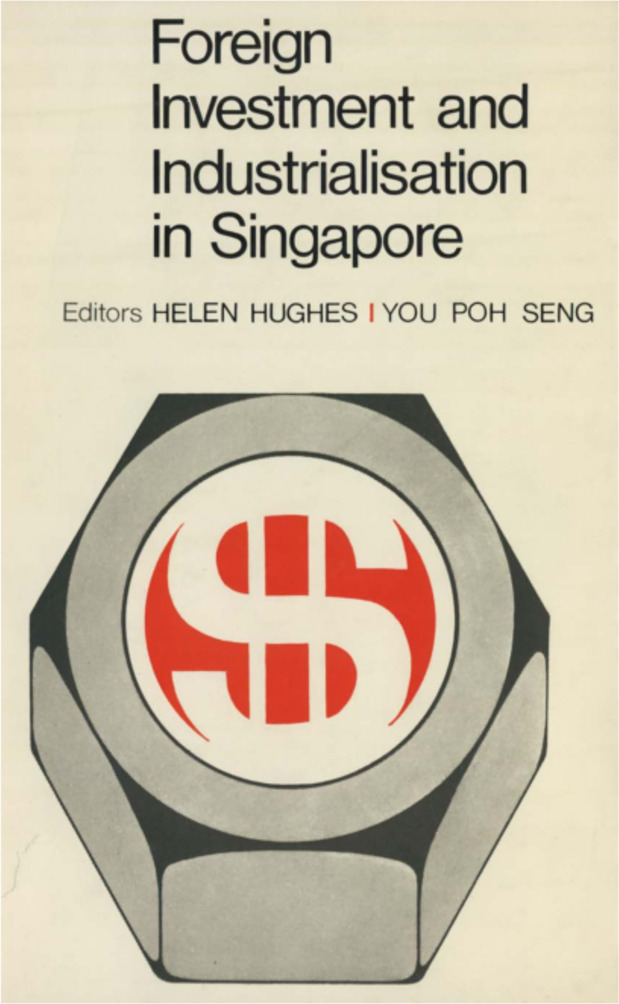
Foreign investment and industrialisation in Singapore »
Publication date: 1969
Singapore has faced extremely difficult economic conditions in the 1960s, and these will be exacerbated by the withdrawal of the United Kingdom military establishment during the next few years. Foreign investment can play an important role in Singapore's economy and at the same time make profits for the foreign investors. This book explores the problems involved. The aim of the surveys conducted by Dr Hughes and her colleagues during 1966 and 1967 was to see whether the incentives offered by Singapore to foreign investors were suitable and effective, to evaluate the contribution made by foreign investors to the development of manufacturing in Singapore, and to highlight the problems they faced. The most surprising finding of the book is that direct financial incentives to foreign investors are unnecessary. Singapore's principal attraction to outside investors lies in its efficient administration and the provision of public services, while its central geographic situation in Southeast Asia has to some extent offset the smallness of its internal market. The book will be of particular interest to two kinds of reader: manufacturers, administrators, and others concerned with investment in Southeast Asia, and economists everywhere who are studying the economic development of the area, the problems of establishing manufacturing industries in developing countries, and the economics of direct foreign investment.
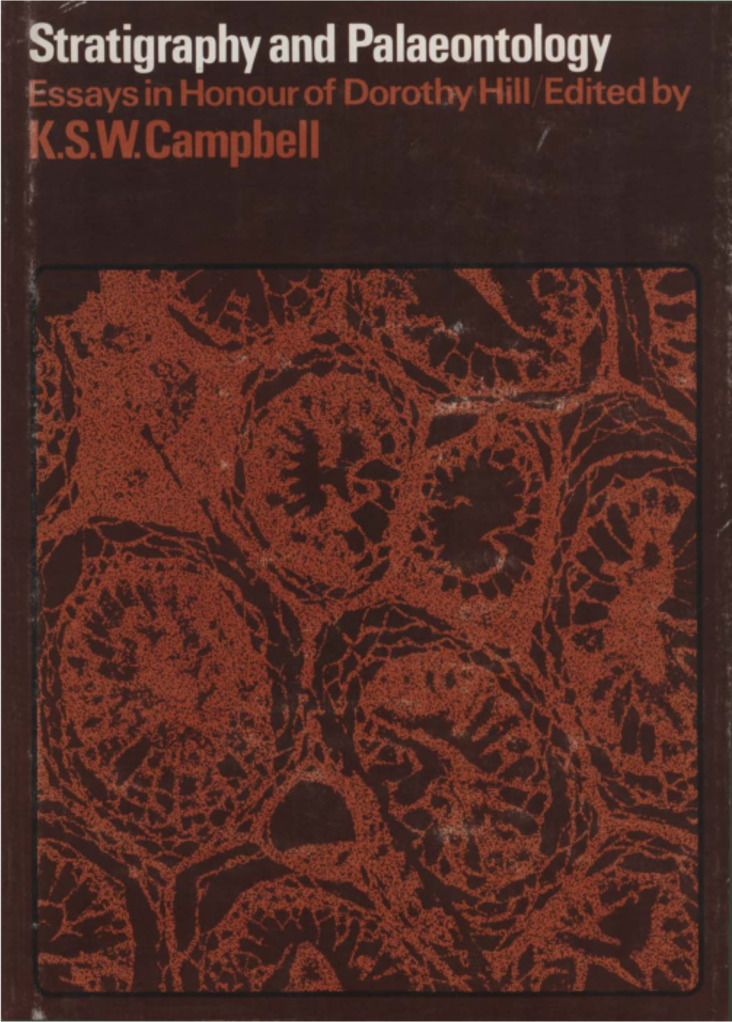
Stratigraphy and palaeontology: essays in honour of Dorothy Hill »
Publication date: 1969
Geology is Earth history. The twenty essays in this book are concerned primarily with illustrating this history by reference to four aspects of stratigraphy and palaeontology: the biological interpretation of fossils, biostratigraphy and biogeography, descriptive palaeontology, and marine sedimentation and geomorphology. The dictum that 'palaeontology is the handmaid of stratigraphy' - without stratigraphy palaeontology would lack a time reference - is a truism. Each, of course, elucidates the other. Not nearly so widely recognised, however, is the relationship of stratigraphy and palaeontology to other aspects of Earth history. Some of the essays in the book will interest biologists as well as geologists in the contribution that fossils make to understanding the problems of evolution, classification, functional morphology and ecology. The correlation of Australian Carboniferous, Permian, and Cretaceous rocks, generally valuable to stratigraphers and palaeontologists, is of particular importance for the economic exploitation of the rocks of the country. The biogeographic analysis of new palaeontological and stratigraphic data is pertinent for geophysicists, geologists, and geographers interested in the problem of continental drift; while by virtue of its geography and its geological record Australia must hold many of the keys for understanding southern hemisphere geology, and all Gondwana reconstructions will have to be checked against the detailed information now made available. Geologists, sedimentologists, and geomorphologists will find stimulating the discussions on the geomorphological development of south-east Queensland and on the Great Barrier Reef. The broad scope of this book, offering as it does essays on many new discoveries and revaluations of past work, will be of considerable value to a wide range of scholars in many disciplines. As such, it is a fitting tribute to the woman it is designed to honour, Professor Dorothy Hill, F.R.S.
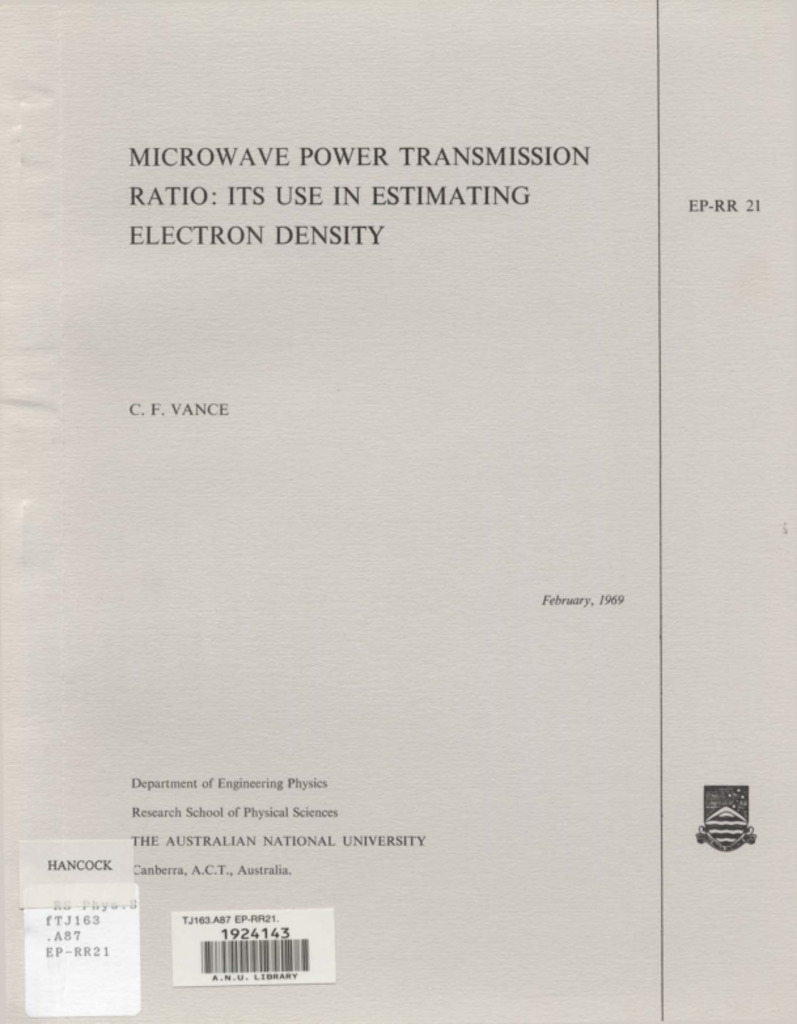
Microwave power transmission ratio: its use in estimating electron density »
Publication date: 1969
Published Press Archives http://press.anu.edu.au/node/3715 1885_114981.jpg ANU Press Microwave power transmission ratio: its use in estimating electron density Monday, 18 August, 1969 Not available Archive Scholarly Information Services Vance, Colin Francis
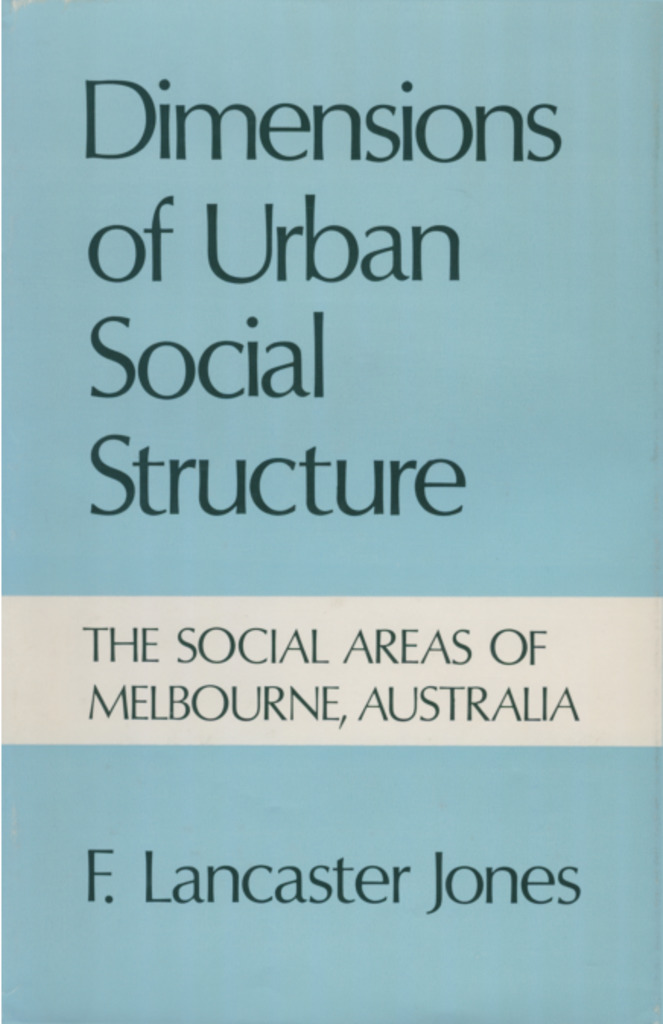
Dimensions of urban social structure: the social areas of Melbourne, Australia »
Publication date: 1969
The physical segregation of social groups in industrial cities has long attracted the attention of social scientist and casual observer alike. In Australia the possibility of mapping the social ecology of large cities has been limited by the absence of sufficiently detailed census information, a gap remedied in 1961 by the provision of a new range of small area data. Here the author exploits the existence of the new information to present the first intensive social anatomy of any Australian metropolis. Statistics on the residential concentration and segregation of seventy socioeconomic, demographic, ethnic, and religious categories are examined, and the vast complexity and range of these data are reduced by sophisticated techniques of statistical analysis to three theoretically meaningful constructs - social rank, familism, and ethnicity. These constructs are used to develop a typology of social areas which serves as the basis for developing an understanding of, and further hypotheses about, urban social structure. Not only does this analysis present a self-contained study of Australia{u2019}s second largest metropolis, but detailed maps and statistical appendixes provide a benchmark for future social investigations into the urban scene - on subjects such as political preference, immigrant adjustment, poverty, crime, delinquency, and urban planning.

Use of the homopolar generator to power xenon discharge tubes and some associated switching problems »
Publication date: 1969
Published Press Archives http://press.anu.edu.au/node/3065 1885_114979.jpg ANU Press Use of the homopolar generator to power xenon discharge tubes and some associated switching problems Monday, 18 August, 1969 Not available Archive Scholarly Information Services Inall, E. K
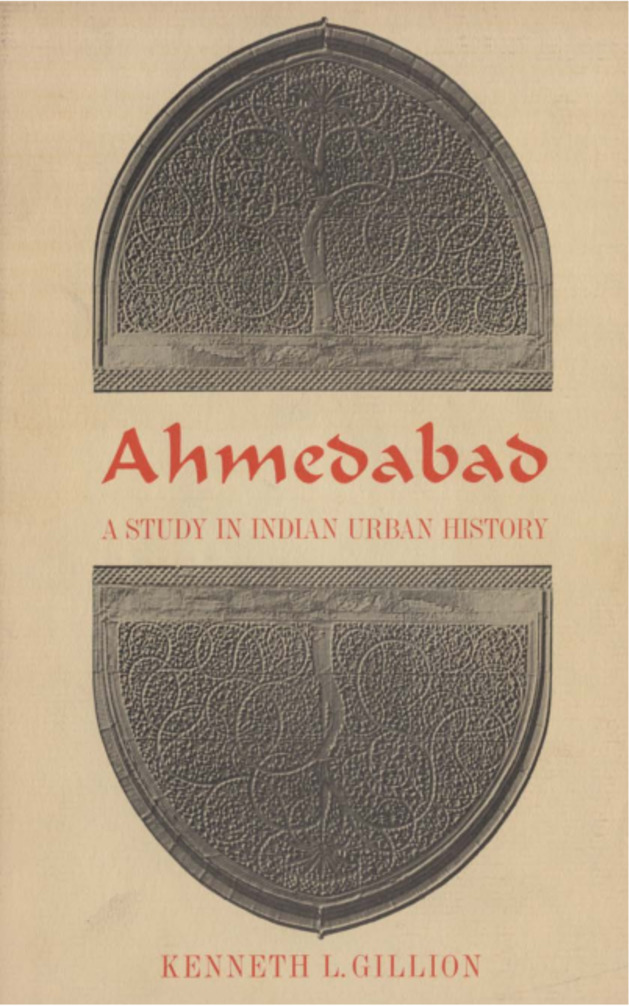
Ahmedabad: a study in Indian urban history »
Publication date: 1969
In what the author describes as a preliminary excursion into Indian urban history, he writes here not about Indian cities in general but about the unique experience of a particular city, Ahmedabad, the capital of Gujarat State in western India and for many years the home of Mahatma Gandhi and Sardar Patel. Ahmedabad, India's sixth city in size and one of the richest, was not a creation of British rule but an old center of trade and industry that adapted to the new age and became "The Manchester of India." Its recovery in the nineteenth century, after a decline in the previous one, contrasted with the experience of other Indian cities, many of which suffered a different fate under British rule. Ahmedabad provides an interesting qualification of many of the statements commonly made about Indian industrialization. Western influence and social change there were limited in the nineteenth century, and the early industrialization of the city was achieved within a society that remained socially and politically conservative. Modern Ahmedabad was the creation of Ahmedabadis, not of outsiders. In no other great city of India can the continuity of past and present be seen so clearly, and it is continuity rather than change that this book emphasizes. Mr. Gillion's account, focusing mainly on the century beginning with the British annexation in 1817, suggests a new way of viewing Indian social and economic history. Indirectly but none the less suggestively, this work reopens the whole question of westernization in India and places it in a fresh perspective.

The early history of Korea: the historical development of the Peninsula up the the introduction of Buddhism in the Fourth Century A.D. »
Publication date: 1969
Korean studies in Western universities have long been hampered by the absence of an adequate general history of Korea in any Western language. The earliest period of Korean history, up to the introduction of Buddhism late in the fourth century a.d., remains the worst served of any. This short history is intended as an attempt to remedy the situation. It is based mostly upon studies already carried out by Korean and Japanese scholars, and aims at making some of the results of their research available to Western students, particularly students of Chinese and Japanese history. Dr Gardiner writes about the background and history of Korea before the Han conquest in 108 b.c.; the structure and development of the Chinese colonies in Korea from 108 b.c. to the end of the third century a.d. ; the early history of Kogury{u014F} later one of the 'Three Kingdoms' of Korea; and finally about the conditions which produced so many changes in Korea in the fourth century A.D., including the beginning of Japanese intervention and the coming of Buddhism.
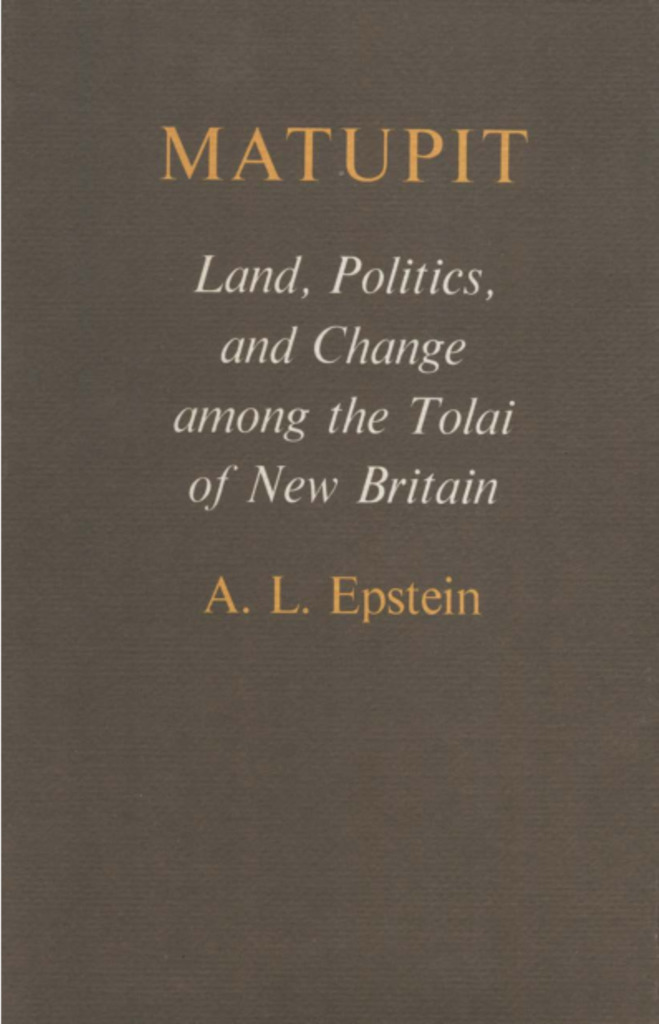
Matupit: land, politics and change among the Tolai of New Britain »
Publication date: 1969
One of the most interesting aspects of the study of change among a people after they have had contact with an alien civilisation is not only how they change but also how much they retain of their traditional ways - continuity in change. This book examines the question as exemplified by the Tolai people of Matupit, a small island near Rabaul. The Tolai of the north-eastern Gazelle Peninsula are among the most sophisticated and wealthy indigenous people of New Guinea and occupy a prominence in the affairs of Papua-New Guinea out of all proportion to their numbers. The Matupi are one of the largest groups of Tolai. Despite their sophistication and close links with Rabaul the Matupi retain many of their old traditions and, though they may work for wages in Rabaul, land is still extremely important to them, for most still grow much of their own food and cultivate cash crops. It is not surprising, therefore, that they devote much time and energy to disputes over land, and a major part of this book is an attempt to understand the nature of these disputes and the part that land plays in their lives. To understand this the author has examined in detail the modern political and economic systems of the island and illustrated his findings by case histories of the often involved disputes over land use and ownership which may go back several generations.
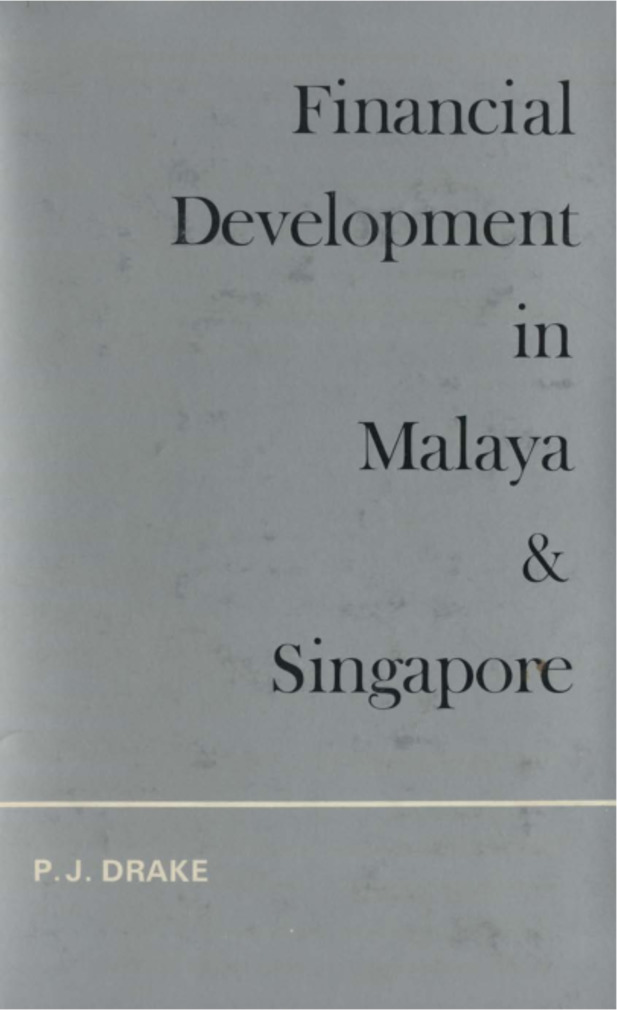
Financial development in Malaya and Singapore »
Publication date: 1969
This book describes and analyses the financial system in Malaya and Singapore as it had developed up to 1967, revealing, in particular, the transition from external domination to financial independence which has taken place in the last decade. While the work concentrates on the period after World War II, it also gives a complete account of historical events concerning the evolution of the system. This is the first up-to-date and comprehensive discussion of the financial problems of the Malayan region. Very little has been written on the subject since 1960 and earlier publications relate mainly to currency history and to the establishment of the Central Bank. The book deals thoroughly with currency arrangements, the commercial banking system, the Central Bank, financial enterprises other than banks, money and securities markets, and monetary and financial policy. It provides a full account of the many significant monetary and financial developments of the last decade and will be essential reading for students of economics in Malaysia and Singapore and for bankers and financiers in, and dealing with, that area. It will also be of great value to readers with interests in the fields of comparative banking and finance, economic development, and Malayan studies.
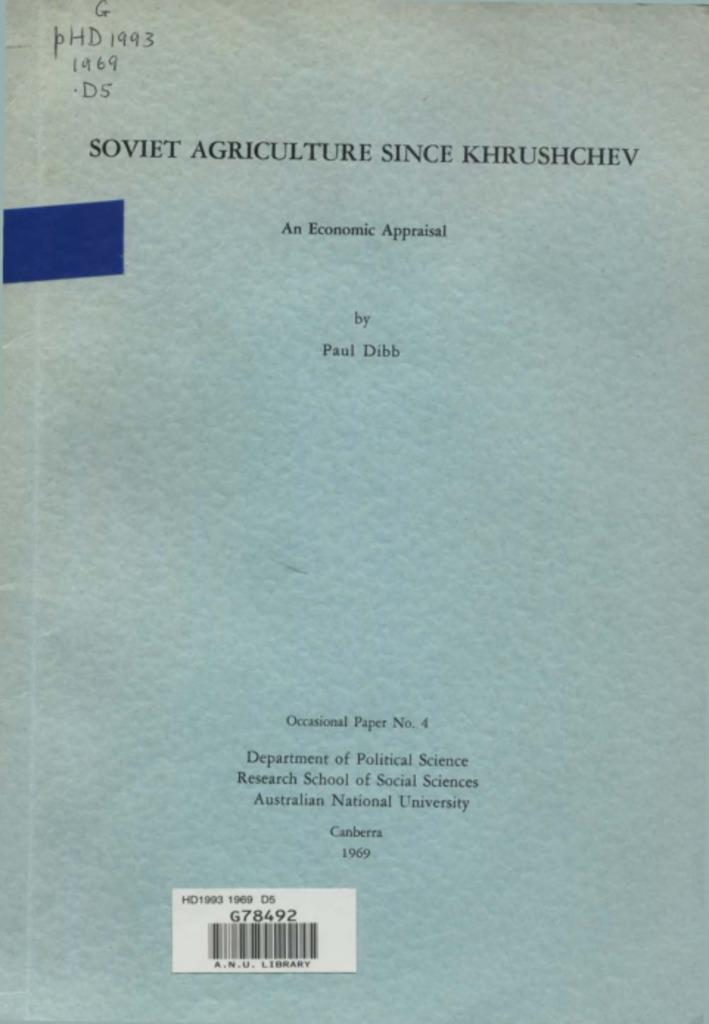
Soviet agriculture since Khrushchev: an economic appraisal »
Publication date: 1969
Published Press Archives http://press.anu.edu.au/node/3333 1885_115012.jpg ANU Press Soviet agriculture since Khrushchev: an economic appraisal Monday, 18 August, 1969 Not available Archive Scholarly Information Services Dibb, Paul

Landforms of cold climates »
Publication date: 1969
This is another volume in the series, An Introduction to Systematic Geomorphology. It is concerned with the landscapes produced where water exists commonly in solid form - as ground ice, as snow, or as glacial ice. Although the present distribution of glaciers, snowbanks, and frozen groundwater is relatively limited, these phenomena were much more extensively distributed during the Pleistocene ice ages and they have left their mark on the landscapes of almost all parts of the temperate world. It is impossible to understand the landscapes of much of southeastern Australia, New Zealand, Europe, and northern North America without taking into consideration the parts played by glacial and periglacial processes during the Pleistocene. Since World War II there has been a great upsurge of interest in the phenomena associate with ice sheets, the tundra lands, and high mountain areas. Much of the work carried out has been inspired by the difficulties of planning and executing engineering works in regions where snow and ice are prevalent, and some of the results of this recent work in the Arctic and Antarctic are incorporated in this volume. Well illustrated with half-tone plates, maps, and diagrams, Landforms of Cold Climates has been designed particularly for schools and universities, but should interest a much wider audience.



